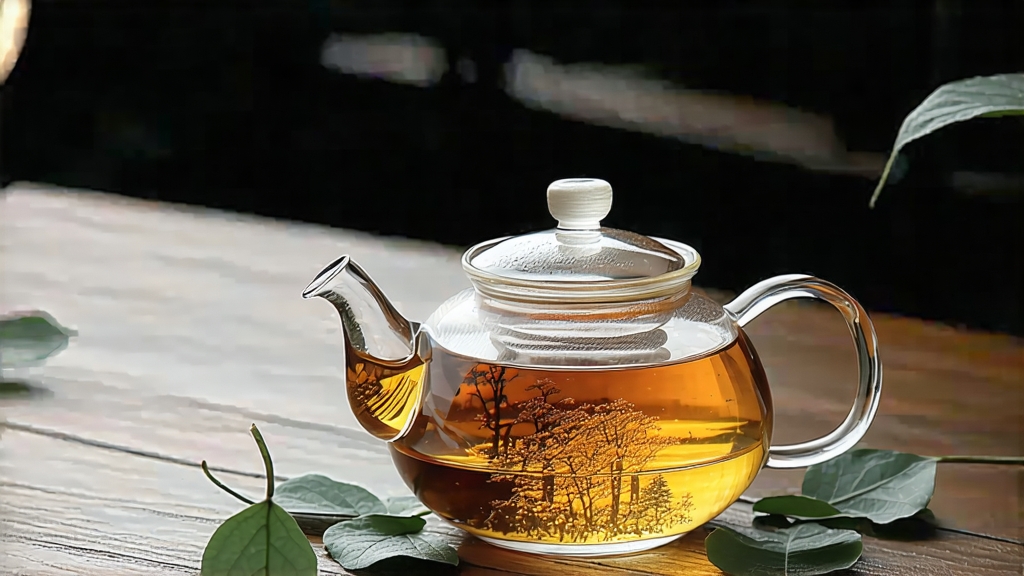
White tea is often praised as the most ethereal member of the Chinese tea family, yet even within this understated category one cultivar drifts across borders like a piece of captured moonlight: Yue Guang Bai, literally “White Moonlight.” Produced almost exclusively in the high-altitude forests of Yunnan Province, this relatively young tea has already seduced connoisseurs from Paris to Portland with its orchid-sweet aroma and glowing amber liquor. To understand why, we must follow the leaf from ancient myth to modern gaiwan, tracing the interplay of geography, craft, and time that turns a single bud and two leaves into liquid moonlight.
Historical origins: myth and market
Unlike the better-known Fujian white teas—Silver Needle, White Peony, Gong Mei—Yue Guang Bai does not appear in Ming-dynasty court records or Song-era treatises. Its story begins in the late 1990s, when Yunnan tea scientists sought a white-style tea that could showcase the region’s indigenous Da Ye (large-leaf) assamica cultivars. Legend claims that the first batches were withered one cool October night when a sudden power outage forced farmers to spread the leaves on open bamboo trays under a full moon. By morning the leaves had lost their grassy edge and gained a honeyed luminosity; the name “White Moonlight” was coined on the spot. Whether apocryphal or accurate, the tale captures the tea’s essential romance: it is made, quite literally, in dialogue with the night.
Terroir: why Yunnan’s moon matters
Yunnan’s southern prefectures—Lincang, Puer, Xishuangbanna—sit between 1,200 and 2,000 m above sea level. Here, monsoon clouds collide with the Himalayas to create cool, misty nights even during the dry season. The large-leaf assamica trees, some over 300 years old, store more polyphenols and soluble sugars than their small-leaf Fujian cousins. When night temperatures drop below 18 °C, enzymatic activity slows, allowing a gradual oxidation that preserves catechins while converting starches into maltose and fructose. The result is a leaf that tastes less like cut grass, more like baked pear and wildflower honey.
Plucking standard: one bud, two leaves, no moonburn
The harvest window is narrow: three days on either side of the autumn equinox, when daylight is gentle and the moon rises early. Pickers select only the “fish-leaf” set—tender apical bud plus the first two leaves—always facing the east where morning sun is weakest. Baskets are woven from bamboo strips wide enough to allow airflow, preventing the bruising that would trigger premature oxidation. Within two hours the leaves must reach the withering loft; any longer and the moonlight metaphor risks becoming mere marketing.
Craft: the four phases of lunar withering
- Night-spreading: Leaves are laid 2 cm thick on rattan trays stacked inside a screened pavilion. Overhead, retractable skylights expose them to moonlight and mountain breeze for 6–8 hours. Humidity is kept at 65–70 % so the cuticle dries slowly.
- Solar kiss: At first light, trays are moved under 70 % shade cloth for 30–45 minutes. This brief solar exposure halts surface enzymes, locking in a silvery down on the bud.
- Ambient rest: The leaves rest in a quiet, dark room for 12 hours, during which internal moisture redistributes. Tea masters call this “the breath of the leaf.”
- Low-temperature bake: Finally, leaves enter a wood-fired oven at 38–42 °C for 20 minutes—just enough to reduce moisture to 8 % without caramelizing sugars. The finished maocha is icy to the touch, its edges curled like dried lotus petals.
Grades and styles
- Silver Moonlight: 100 % buds, downy white with a faint blue iridescence under LED light. Liquor is almost colorless at first pour, then develops a platinum halo.
- Moonlight Peony: bud plus first two leaves; leaf backs show a charcoal-grey mottling where moonlight struck unevenly. Infusion is apricot-gold.
- Night-sprung Gong Mei: later harvest, more leaf than bud; pressed into